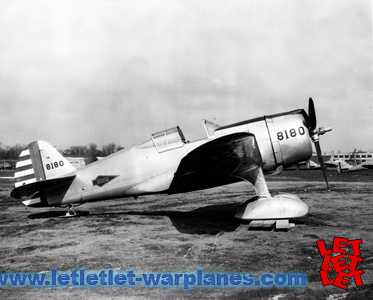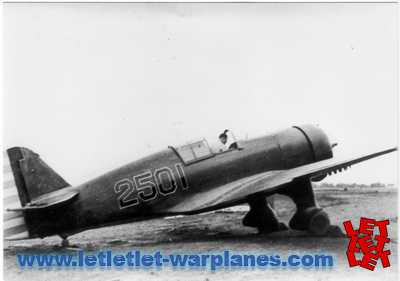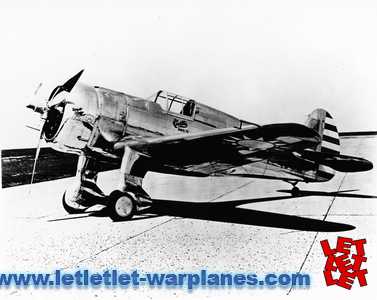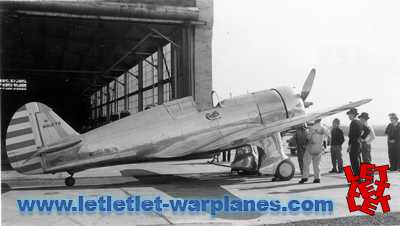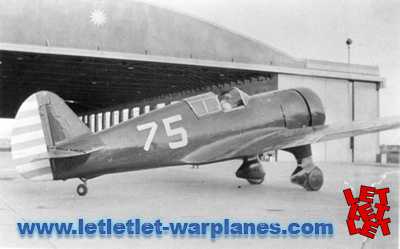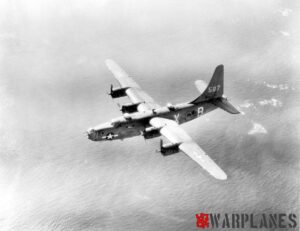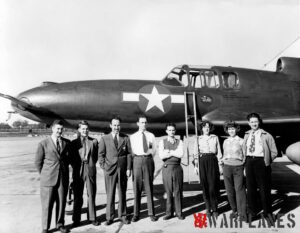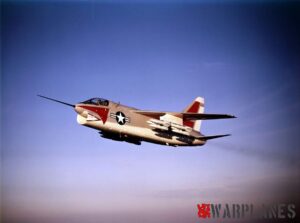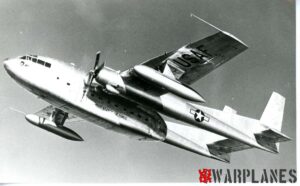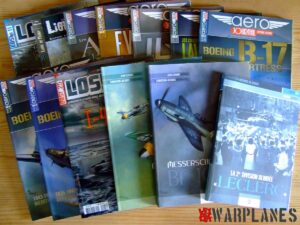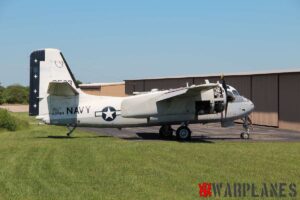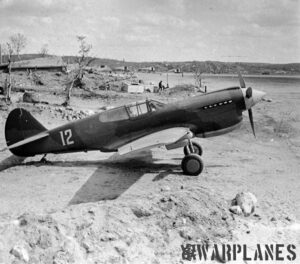Curtiss Model 75 Hawk – fixed u/c versions
The Curtiss Model 75 was originally developed by Curtiss to enter the new U.S. Army pursuit plane competition of May 1935. It was a revolutionary design from Curtiss Chief designer Don Berlin of all-metal construction with a monocoque fuselage, a fully enclosed cockpit and a retractable main undercarriage. As usual for that time only the control surfaces were covered with fabric; the rest of the new pursuit plane was covered with aluminium. The Model 75 made its first flight on 6 May 1935, carrying the civil registration X17Y.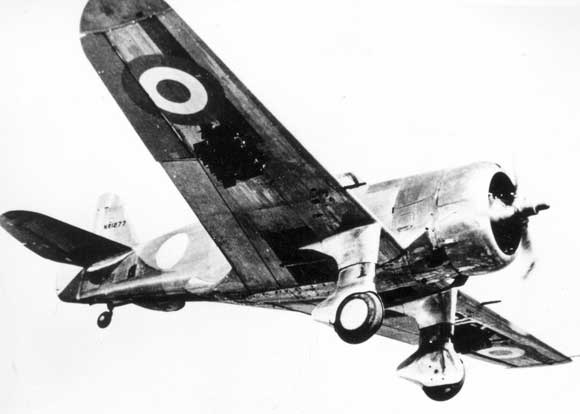
Winner of the new pursuit plane contest was Seversky, who received a production order for their plane as the P-35. However, also the Model 75 was later ordered as a standard pursuit plane as the P-36. Although it was in fact already obsolete at the start of the Second World War it saw a quite extensive operational career, not only at the U.S. Army Air corps, but also at other countries like France, the Netherlands East Indies and the UK.
However, in this article, we shall only have a closer look at the lesser known variant with a fixed undercarriage.
Curtiss offered for export a simpler model as the Hawk 75H. Basically it had a lower rated Wright Cyclone engine and a non-retractable streamlined main undercarriage. It also lacked the characteristic extra cockpit side windows of the P-36 models, although these were fitted on some later export models! With its non-retractable undercarriage it was also somewhat lighter and easier to maintain than the P-36.This simplified Hawk 75H model had a larger range than its more powerful ‘sisterships’, but it’s maximum speed was some 50 km/h less than that of the standard P-36. Except for the Model 75H, other export versions with a non-retractable undercarriage were designated as Hawk 75M, N. O and Q.
Although this specific export version was produced in substantial lower numbers than the P-36, it was exported to various countries. When compared with the P-36, it hardly can be regarded as a great commercial success!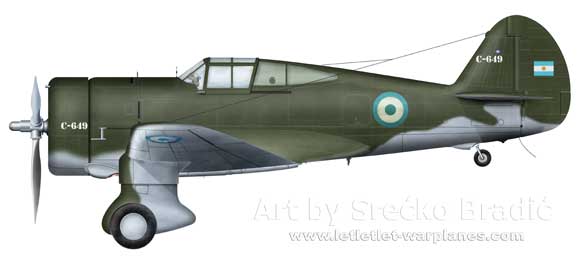
The Model 75 ‘Export’-Hawk was supplied to the following countries:
Argentina
Argentina bought 29 Hawk 75O’s, intended for rough-field operations and ease of maintenance. An additional 20 were licence-built by F.M.A. in Argentina in 1940. Also the Curtiss Hawk 75H demonstrator NR1277 (c/n 12328) was eventually sold to Argentina.
Standard armament was one 11.35 mm and three 7.65 mm Madsen light machine guns. with provision for up to 10 bombs of 30 pounds each on underwing pylons. The last Argentinean Hawks remained in active service until November 1954, but some were kept airworthy until the early sixties.
Construction nos. of Curtiss supplied machines were 12769-12797. The Argentinean Hawks had the same extended cockpit glazing as the standard P-36.
China
The Hawk 75H demonstrator NR-1276 c/n 12327 was sold to the Chinese Nationalist government who presented it to Claire L. Chennault for personal use. China also received two similar demonstrators, the Hawk 75Q. One of these, c/n 12898, was later converted to have a retractable undercarriage. This plane was presented by Madame Chiang Kai-shek to General Claire Chennault. The other Hawk 75Q crashed at take-off on 5 May 1939.
The Hawk 75M was a similar version for China, built by both Curtiss and Central Aircraft Manufacturing Company in China. No. build: 112 ordered for China, but only 30 supplied by Curtiss (c/ns 12625-12654). Rest must have been manufactured by Central Aircraft Manufacturing Co. in China from tooling and kits delivered by Curtiss. The Hawk 75M was used operationally against Japanese forces and three full squadrons are known to have been operational.
Thailand
Twelve Hawk 75N,s were used by Siam (now Thailand) during the French-Thai War. They were supplied in 1938. Construction numbers were 12756-12767. They also fought at the Battle of Prachuab Khirikhan against Japanese forces during the Japanese Invasion of Thailand. Some of them must have been captured by the Japanese. A complete and restored Hawk 75N survives in the Royal Air Force Museum of Thailand at the military section of Bangkok airport. The serial number is unknown, apparently even to the Thai!
An interesting development was that one of the Wright field based P-36’s ( with U.S.A.A.F. serial no.
38-180) was retro-fitted with a non-retractable undercarriage with snow skids. Further details are lacking, but at least there is photographic evidence of this interesting variant that was maybe tested under winter conditions at Ladd Field, Alaska!
Total production
Hawk 75H: 2 flown as demonstrator. One sold to Argentina, the other to China
Hawk 75M: 30 for China + 82 reported to have been locally licence manufactured
Hawk 75N: 12 for Siam
Hawk 75O: 29 for Argentina + 20 built locally under licence
Hawk 75Q: 2 flown as demonstrator for China
Total number manufactured including licence-built: 177 (75 supplied by Curtiss)
Websites on P-36
http://curtisshawk75.bravepages.com/
http://en.wikipedia.org/wiki/Curtiss_P-36_Hawk
http://www.warbirdforum.com/uncert.htm
http://www.argentinaoob.com.ar/Curtiss75.html
http://www.mincyt.cba.gov.ar/site/fabricamilitar/19271943/19271943_08q.html
Technical details Hawk 75M
General characteristics
- Crew: One
- Length: 28 ft 7 in (11.27 m)
- Wingspan: 37 ft 0 in (8.71 m)
- Height: 9 ft 3 in (2.81 m)
- Wing area: 236 ft² (21.92 m²)
- Empty weight: 3975 lb (1803 kg)
- Loaded weight: 5305 lb (2406 kg)
- Powerplant: 1× Wright GR-1820-G3 Cyclone air-cooled radial piston engine, 875hp
- Performances:
- Maximum speed: 280 mph (450.6 km/h) at 10,000 ft, 3048 m
- Cruise speed: 240 mph (386.2 km/h)
- Range: 1210 mi (1947 km) with fuel overload
- Service ceiling: 31,800 ft (9693 m)
Armament
As requested by customer, but typical was two 0.30 inch machine guns
Nico Braas
Literature -Anonymous. United States Air Force Museum Guidebook. Wright-Patterson AFB, Ohio: Air Force Museum Foundation, 1975 -Bowers, Peter M. Curtiss Aircraft, 1907-1947. Putnam, London, 1979 -Green, William. War Planes of the Second World War, Volume Four: Fighters. MacDonald & Co. London, 1961.
